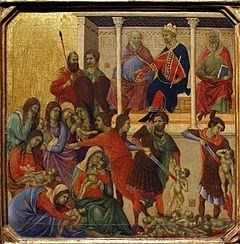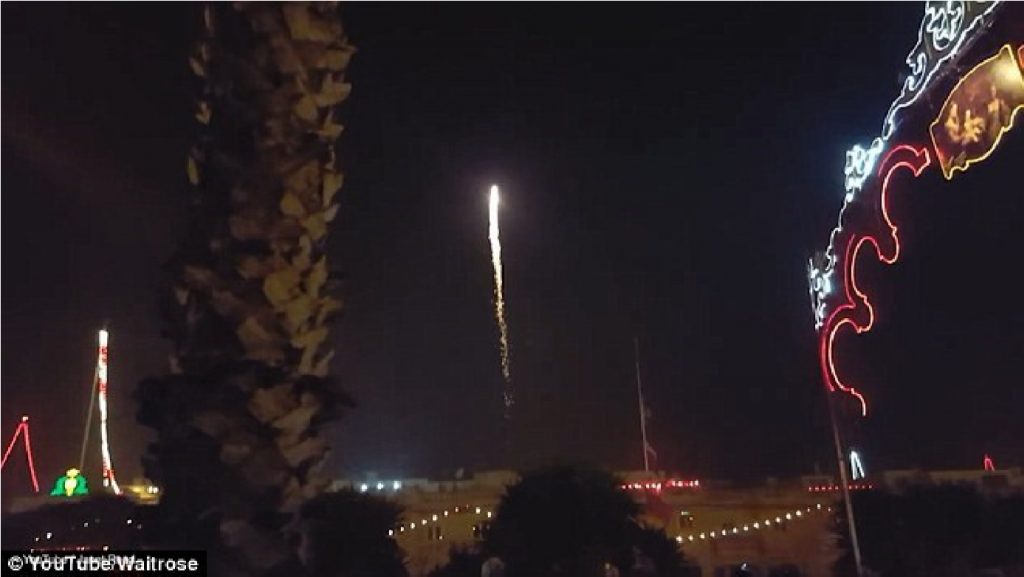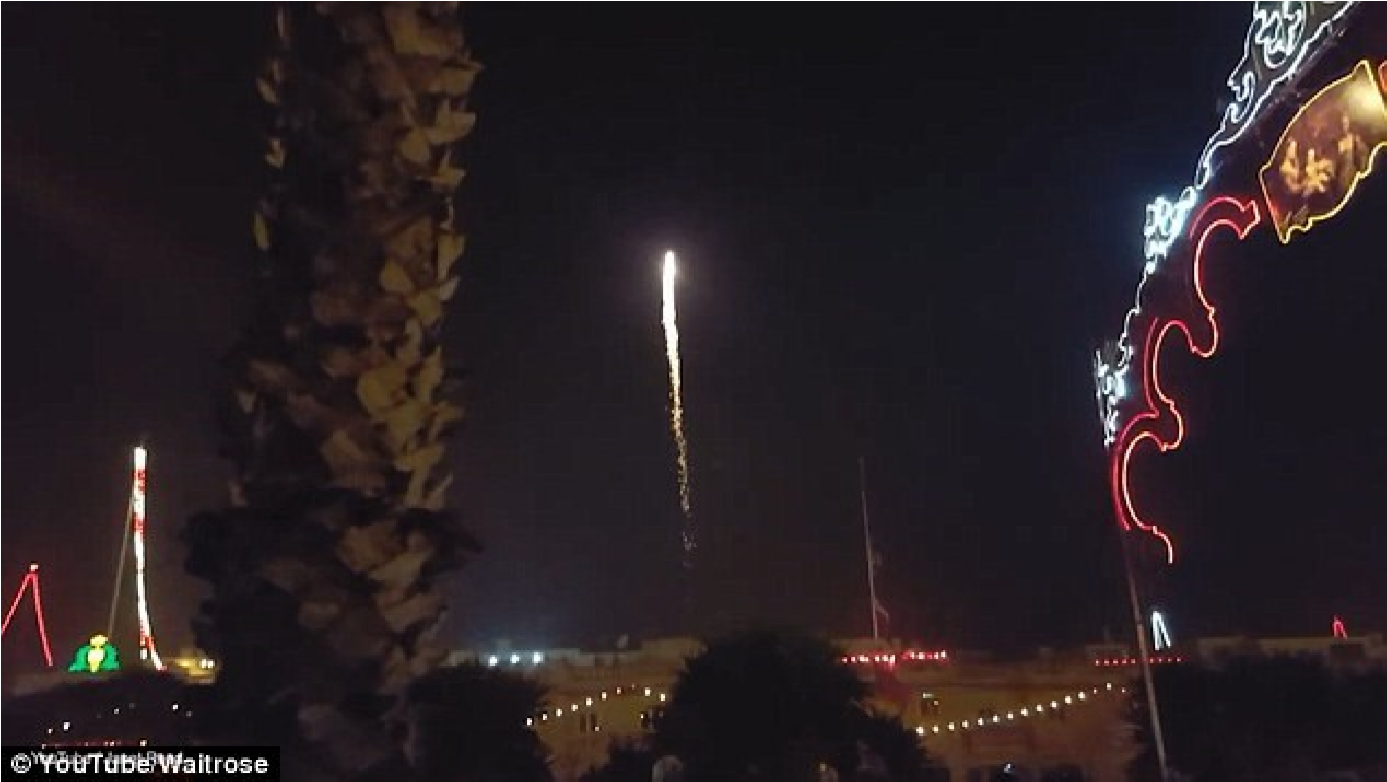By Terry Sovil from the January 2019 Edition
Fireworks in religious ceremonies at Christmas are something I don’t like! “Do some research”, I thought. Despite many accidents, they still use fireworks…sky rockets that explode with an obnoxious “Bang!” but don’t light up the sky. There are complaints in major Mexican cities. Why do they continue?
History
English-speaking folks think of Christmas with traditions from Northern Europe. Christmas trees, wreaths, Santa Claus, mistletoe. Mexican traditions are very different from those in the USA or Canada. Mexico has traditions influenced by the Spanish and indigenous cultures.
The Spanish started arriving in Mexico in the 16th century and they included Spanish Catholic priests. The priests brought Catholicism and Christian holidays, including Christmas. Some traditions are from these original first priests but many have grown and changed over time, often as a result of interactions with other cultures. In Mexico, Christmas is more than a single day. It runs from December 3 to February 2. It starts with honoring the patron saint of Mexico, the Virgin of Guadalupe, which has both religious and political history.
Important dates
December 3 starts a 9-day novena to the Virgin of Guadalupe. A novena is a Christian tradition of praying repeatedly for 9 consecutive days. The last day, the 12th, is the feast day of the Virgin. Many Mexicans celebrate with mass, serenades, dancing and singing “Las Mañanitas” to honor the Lady of Guadalupe.
December 16 – 24 is the season of las posadas, the name for “inn” which had a big role in the Christmas story. Posadas are processions or parties that celebrate the Christmas season. December 24, Nochebuena (Christmas Eve), is a traditional night for families to attend midnight mass then go home to a late-night feast of ham, turkey and mole with ponche to drink. Gifts are not traditionally exchanged but this is changing due to USA influence.
December 25 is called Navidad or Christmas day, a quiet day with family and rest from the previous night. December 28 is Dia de los Santos Inocentes, marking the day King Herod ordered all of the newborn babies in Bethlehem killed to prevent Christ from arriving. This has become a day of practical jokes and tricks, similar to April Fool’s Day. December 31 and January 1 are celebrated much like in the rest of the world.
Massacre of the Innocents

February 2 – Candlemas, or the Día de la Candelaria, is the last day of the Christmas season. Tamales and atole are paid for by the person that got the baby figure from the Rosca.
In 2013, a sky rocket hit overhead wires, ricocheted into an accumulation of fireworks, setting off an explosion that killed
16 people and injured more than 100 in the state of Tlaxcala. December 20, 2016 42 people were killed in Tultepec, the main town for making fireworks in Mexico, when a rocket exploded at the height of the Christmas rush. That made international news. There have been 2 similar explosions there in the last 12 years. Every celebration there includes fireworks.
July 2017, 24 people were killed in a fireworks explosions in
Tultepec. March 10, 2018 549 people received minor injuries

Exploding bull in Tultepec
Parishioners had donated fireworks for a festival “but something went wrong and they exploded”. A video posted on social media documented people marching to the church when a giant blast sent them running and screaming.
The Catholic Church does speak up against “fun” that may have gone too far. About 30,000 people work in the fireworks

Aerial burst
market in Tultepec. Paying homage to the deceased from a fireworks tragedy with more fireworks caused uncomfortable moments in Mexican society and in the Catholic Church. It was described as “excessive and often careless” use of fireworks in celebrations. Priests have few explanations for fireworks other than fondness for them throughout the country. “It’s a way of expressing the joy of the fiesta, it’s making noise with sky rockets. Just like church bells ring, sky rockets explode,” said Father Hugo Valdemar Romero, spokesman for the Archdiocese of Mexico City. “It’s a very old tradition. All the rural pueblos of Mexico maintain it and urban areas, too, including Mexico City.”
In Tultepec, locals celebrate St. John of God, patron saint of fireworks makers, on March 8. They tell the story of how he braved fire to save patients in his burning hospital. Feasts and recognition days are often organized by a committee outside of parishes. Priests that suggest the money is excessive and should be spent on social projects often meet with resistance. There are some that believe prayers are amplified by exploding fireworks. One priest said he has been in risky situations but that people don’t care. He notes that fireworks have become a part of local ceremonies.
Me? Both of my dogs cower and tremble at thunder and fireworks. I get blasted out of a sound sleep at 4:00am or jump when explosions go off every 2 minutes. You would think the Catholic Church would just say “No” as it sure doesn’t improve their image.
Change is hard. A good, local friend advised “Everyone hates it! But it’s a tradition and it’s religious, so pretty much untouchable.”
The full edition or view it online
—
Terry is a founding partner and scuba instructor for Aquatic Sports and Adventures (Deportes y Aventuras Acuáticas) in Manzanillo. A PADI (Professional Association of Dive Instructors) Master Instructor in his 36th year as a PADI Professional. He also holds 15 Specialty Instructor Course ratings. Terry held a US Coast Guard 50-Ton Masters (Captain’s) License. In his past corporate life, he worked in computers from 1973 to 2005 from a computer operator to a project manager for companies including GE Capital Fleet Services and Target. From 2005 to 2008, he developed and oversaw delivery of training to Target’s Loss Prevention (Asset Protection) employees on the West Coast, USA. He led a network of 80+ instructors, evaluated training, performed needs assessments and gathered feedback on the delivery of training, conducted training in Crisis Leadership and Non-Violent Crisis Intervention to Target executives. Independently, he has taught hundreds of hours of skills-based training in American Red Cross CPR, First Aid, SCUBA and sailing and managed a staff of Project Managers at LogicBay in the production of multi-media training and web sites in a fast-paced environment of artists, instructional designers, writers and developers, creating a variety of interactive training and support products for Fortune 1000 companies.




